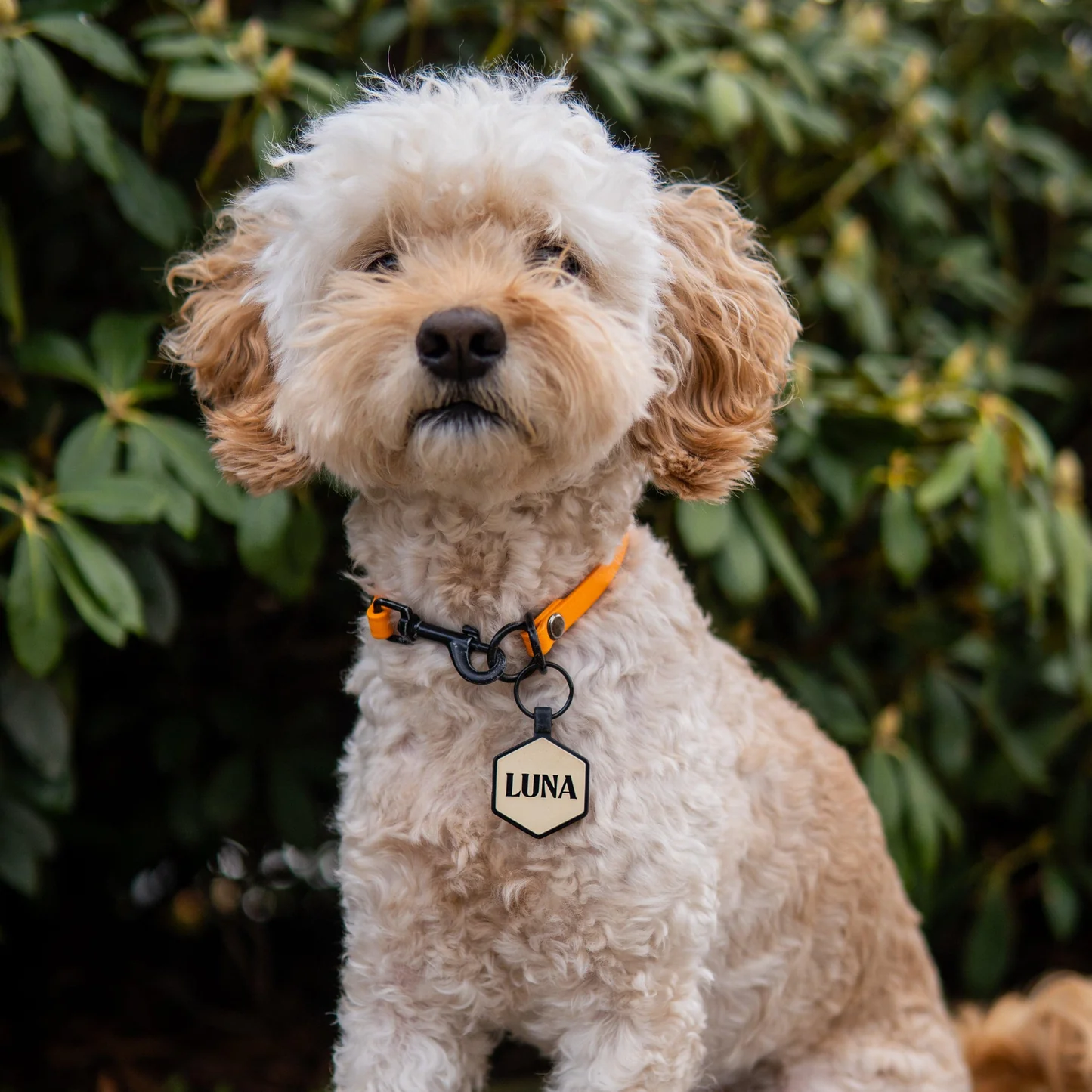An ID tag is one of the most important accessories your dog can wear. While collars and harnesses help with control, it’s the dog ID tag that speaks on behalf of your pet if they ever get lost. Choosing the right one ensures your dog is identified quickly and returned safely.
But with so many types available metal, plastic, silicone, engraved, QR-coded it’s easy to feel overwhelmed. Here’s what you need to know when selecting the best dog ID tag for your furry friend.
Why Dog ID Tags Matter More Than Ever
Even if your dog is microchipped, a visible pet ID tag is the fastest way for someone to contact you in an emergency. It eliminates the need for scanners or vet visits. Whether your dog slips out of the yard or bolts during a thunderstorm, a clear tag can get them home within minutes.

Key benefits of a dog tag:
- Immediate access to your contact info
- Communicates health needs or special alerts
- Shows your pet is owned and loved
- Increases return chances during emergencies or natural disasters
What Information Should Be on a Dog Tag?
At a minimum, your dog name tag should include:
- Your dog’s name
- A reliable phone number
- City or address (optional)
- “Microchipped” or medical alerts (if needed)
Some custom dog tags allow multiple lines, making it easier to include secondary contact numbers or short notes like “Needs meds” or “Friendly.”
Types of Dog Tags: Which Material Works Best?
When choosing a tag, durability and readability are key. Here’s a breakdown:
Metal Tags
- Common and affordable
- Prone to rust, wear, and jingling noise
- Can fade with time, especially for active dogs
Plastic Tags
- Lightweight and quieter than metal
- May crack or chip over time
- Not always weatherproof
Silicone Tags (Silent and Durable)
- Soft, quiet, waterproof, and flexible
- Won’t fade or corrode
- Great for dogs that are sensitive to sound or always on the move
One standout option in this category is the SiliDog Tag 2 a completely silent dog tag made from durable silicone. It’s fade-resistant, glow-in-the-dark, and fully customizable. Perfect for dogs that wear collars 24/7 or are easily startled by noise.
Engraving vs Printed Dog Tags: Which Lasts Longer?
Engraved tags are generally more long-lasting than printed ones. Whether you opt for metal or silicone, deep engraving ensures that contact details remain legible even after months of wear.
The SiliDog Tag 2, for instance, uses precision engraving that won’t chip or rub off, even if your dog plays rough at the park or dives headfirst into puddles.
ther Features to Consider
When selecting a custom dog ID tag, consider:
- Size & shape: Should be proportional to your dog’s breed and collar
- Glow-in-the-dark or reflective surface: Enhances nighttime safety
- Attachment type: Choose a secure ring or loop that won’t fall off
- Style options: Bone, heart, round, or novelty designs that match your pet’s personality
Some modern ID tags even offer QR code integration or smart tech tracking but traditional engraved tags remain the most practical and widely accepted solution.
Is It Worth Spending More on a High-Quality Tag?
Absolutely. A few extra dollars can mean the difference between a tag that breaks off within weeks and one that lasts through years of adventures.
Tags like the SiliDog Tag 2 provide excellent value with their weatherproof design, silent wear, and high visibility making them a top choice among pet owners looking for both safety and comfort.
Final Thoughts
Your dog’s ID tag is a small detail, but it plays a big role in their everyday safety. Choosing a tag that is readable, durable, comfortable, and fits your dog’s lifestyle is one of the simplest ways to protect them.
Whether you prefer a classic metal tag or a modern, silent silicone tag like the SiliDog Tag 2, what matters most is that your dog is always wearing one just in case.
Frequently Asked Questions About Dog ID Tags
1. Should indoor dogs wear ID tags too?
Yes. Even indoor dogs can slip outside unexpectedly due to an open door or loud noise. An ID tag helps ensure they are returned quickly and safely.
2. What size tag is best for my dog?
Choose a tag that matches your dog’s size. Small breeds or puppies need lightweight tags, while larger dogs can wear standard-sized ones. Silicone tags work well for all sizes.
3. Can my dog wear a tag with a harness instead of a collar?
Yes. You can attach the ID tag to your dog’s harness. Just make sure it’s secure and won’t fall off. Some owners also keep a tag on a backup collar.
4. Are personalized dog tags worth it?
Absolutely. Personalized tags let you add key details like your phone number and your dog’s name. Engraving ensures the info stays readable over time.
5. Do silent dog tags really work?
Yes. Silent tags made from silicone eliminate jingling sounds. They’re ideal for nervous dogs or quiet environments, especially at night.
6. Are dog ID tags still necessary if my dog is microchipped?
Yes. Microchips need a scanner, but ID tags provide immediate contact information to anyone who finds your dog speeding up their safe return.
